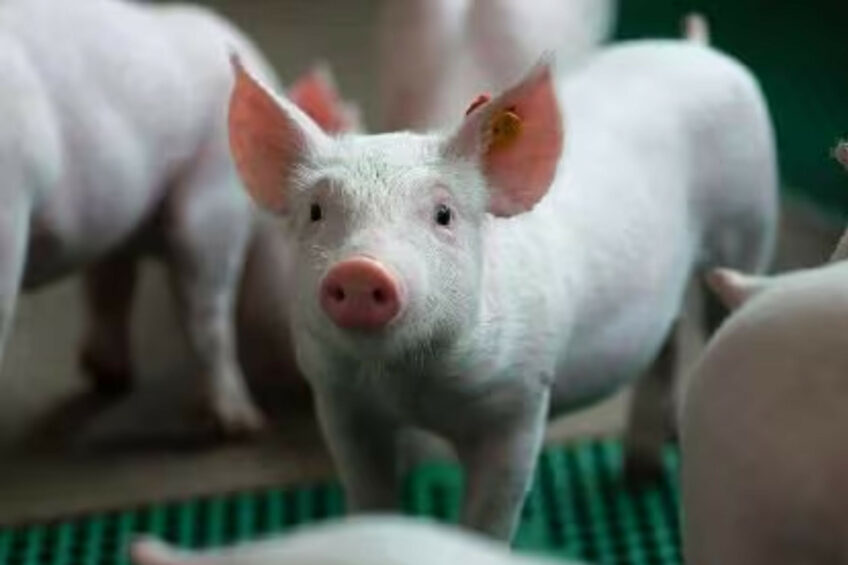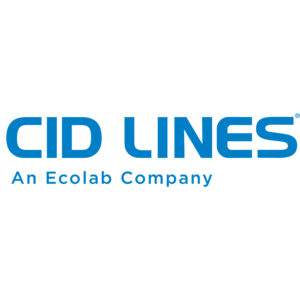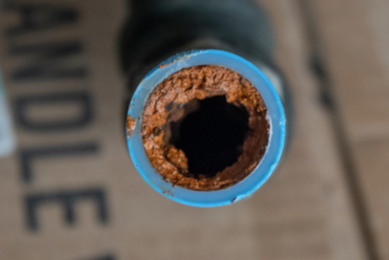Swine Prime and the critical role of hygiene in swine production

Maintaining optimal hygiene in swine maternity units is crucial for safeguarding the health and productivity of both sows and piglets. Swine Prime is specifically designed to elevate health standards and boost productivity within these units.
Effective cleaning and disinfection practices are integral components of biosecurity measures, significantly reducing the risk of introducing new pathogens and facilitating the eradication of endemic diseases.
Cleaning and disinfection measures involve a series of step-by-step procedures such as dry and wet cleaning, rinsing, disinfecting, and evaluating the effectiveness of the process, along with additional measures that must be applied for premises, vehicles, equipment, personnel, visitors, protective clothing, manure, etc.
Therefore, proper adherence to cleaning and disinfection procedures is crucial in reducing the transmission of infectious agents within and between animal farms.
Swine Prime – an advanced hygiene programme
Selecting the proper hygiene programme is key in effectively reducing and eliminating the organic load. Swine Prime is a complete hygiene programme developed by CID Lines, an Ecolab company.
This programme addresses barn and water hygiene to ensure thorough cleaning and disinfection of surfaces and drinking water systems supporting more sustainable and efficient animal production.
A success story in maternities
A research study was conducted to evaluate the efficacy of the Swine Prime programme in the lactation barn of 4 different commercial pig farms in comparison to the current cleaning and disinfection programme used on the farms.
The efficacy was based on the positive impact on health status (reduction in the use of antibiotics and in mortality) of the suckling piglets. It was a before-and-after study, and 2 batches of suckling piglets were followed up in the control group. After a training session with farmers to properly apply the Swine Prime programme, 6 batches were assessed in the Swine Prime group.
During the suckling period, all clinical incidences (mortality and antibiotic interventions) were recorded daily in each litter. To determine the bacterial load of the room after the cleaning and after the disinfection processes, surface samples were taken at different times in all 4 farms. In total, 542 and 1,621 litters in the control and Swine Prime group, respectively, were followed up during the study.
The hygiene programme affected the percentage of piglets that required antibiotic intervention. In this regard, digestive disorders were the major medication cause during the control period (14.3%), followed by lameness (2.6%).
An effective solution
After the initiation of the Swine Prime programme, the incidence of these pathologies was reduced to 2% and 1.2%, respectively (P<0.05). Respiratory diseases had a lower incidence, although they were also reduced by the Swine Prime programme (from 0.35% to 0%).
In addition, the incidence of these diseases differed between farms. In the case of digestive disorders, the reduction was patent in all 4 farms. In the case of meningitis, only 2 of the farms (farms 2 and 4) had recurrent meningitis incidence, and the Swine Prime group resulted in a reduction of 64.1% and 39% in each of these 2 farms. Farm 4 also reduced its lameness incidence from 9.9% in the Control group to 4.8% in the Swine Prime group.

In general terms, the percentage of piglets requiring any antibiotic intervention was lower in the Swine Prime litters in all farms (Figure 1) and was reduced 4.7 times (from 18% in control piglets to 3.8% in the Swine Prime piglets; P<0.0001).
Pre-weaning mortality was also reduced after the Swine Prime programme (15.8% vs 13.2%; P<0.01). This reduction was mainly associated with lower digestive disease, especially in farm 2, which had a high incidence of diarrhea (3.75% of pre-weaning mortality due to diarrhea), and it was reduced to 0.6%. Consequently, the number of weaned piglets per litter was higher in the Swine Prime group (12.0 vs 11.8; P<0.05).
Conclusions
The results obtained in this field study confirm that selecting the proper hygiene programme – Swine Prime – paired with proper training of farm workers on product application and protocol, significantly improved the health status of suckling piglets in commercial farms, becoming an efficient tool for internal and external biosecurity in pig herds.
References are available on request.




